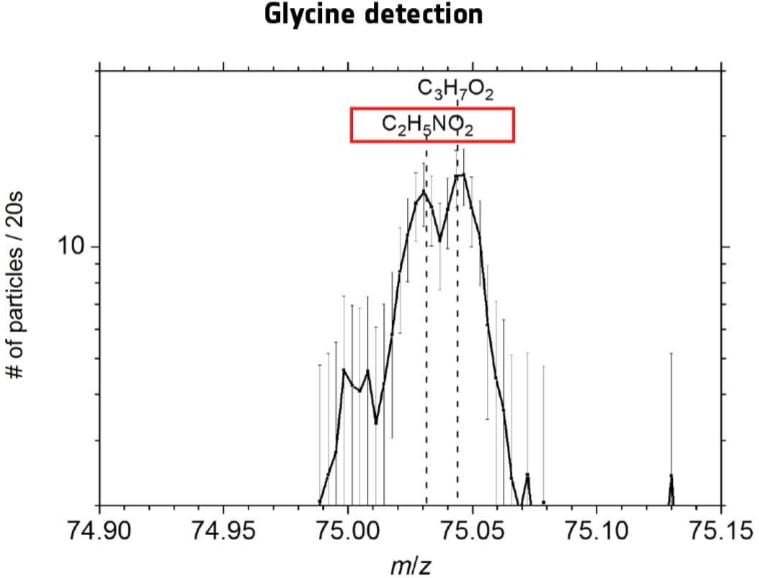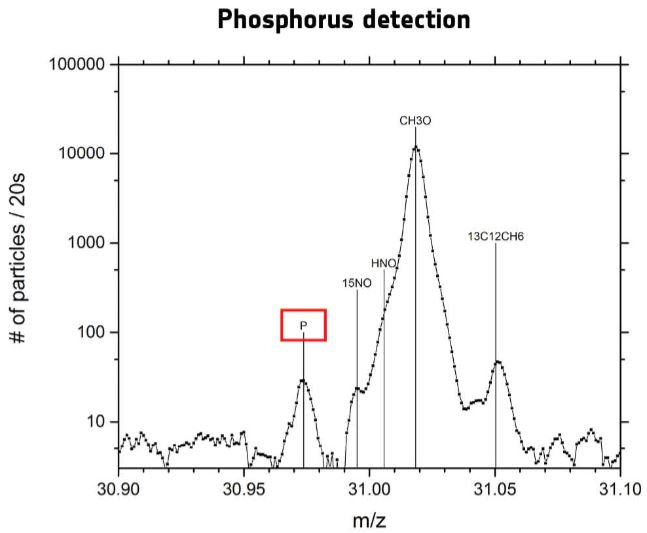A comet that the ESA’s (European Space Agency’s) Rosetta spacecraft has been probing for nearly two years has ingredients that are regarded as crucial for the origin of life on Earth. We could have originated from outer space, i.e. from comets that crashed into Earth.
An alien is a life-form not from Earth, from somewhere else in the Universe. If we originated from comets, that would make us aliens, wouldn’t it?
The Rosetta spacecraft found that this particular comet – known as comet 67P/Churyumov–Gerasimenko (67P) – has the amino acid glycine (C2H5NO2), which is commonly found in proteins. Phosphorus (chemical element with symbol P), a key component of cell membranes, DNA and RNA, was also detected.
 This picture of Comet 67P/Churyumov–Gerasimenko was taken from Rosetta’s navigation camera at a distance of 86.6 km. Rosetta has detected the ingredients that are critical for the formation of life on the comet. (Image: esa.int)
This picture of Comet 67P/Churyumov–Gerasimenko was taken from Rosetta’s navigation camera at a distance of 86.6 km. Rosetta has detected the ingredients that are critical for the formation of life on the comet. (Image: esa.int)
Did life originate from comets and asteroids?
Scientists have debated for several decades about the possibility that organic molecules and water were brought here by comets and asteroids when our planet was very young – after it cooled following its formation. Perhaps these celestial bodies provided some of the vital building blocks for the emergence of life.
While we already know that a number of asteroids and comets have water with a composition like that of our oceans, Rosetta found a significant difference at 67P, an observation that fuelled the debate on comets’ role in the origin of Earth’s water.
However, after analysing the latest Rosetta data, scientists say that comets had the potential to deliver the ingredients that are critical for the formation of life as we know it.
Amino acids make proteins
Amino acids bond together to make long chains. These long chains of amino acids are also called proteins. Amino acids contain hydrogen, carbon, oxygen and nitrogen – they form the basis of proteins.
 Rosetta, the European Space Agency probe. The measurements were made with the ROSINA DFMS (Rosetta Orbiter Spectrometer for Ion and Neutral Analysis Double-Focusing mass Spectrometer). (Image: esa.int)
Rosetta, the European Space Agency probe. The measurements were made with the ROSINA DFMS (Rosetta Orbiter Spectrometer for Ion and Neutral Analysis Double-Focusing mass Spectrometer). (Image: esa.int)
In 2006, NASA’s Stardust mission brought back samples from Comet Wild-2, which had hints of the simplest amino acid glycine. However, the scientists said there was a chance of terrestrial contamination, which made the analysis unreliable and extremely difficult.
Now, Rosetta has made several direct detections of glycine in the comet’s coma (the nebulous envelope around the nucleus of a comet).
Lead author of a paper published in Science Advances, Kathrin Altwegg, who was principal investigator of the ROSINA instrument that made the measurements, said:
“This is the first unambiguous detection of glycine at a comet. At the same time, we also detected certain other organic molecules that can be precursors to glycine, hinting at the possible ways in which it may have formed.”
The measurements were made in August 2015, before the comet reached its perihelion – its closest point to the Sun – in its 6.5 year orbit.
 Spectrum indicating glycine (C2H5NO2) detection on 9 July, 2014. This simple amino acid is a biologically important organic compound commonly found in proteins. (Image: advances.sciencemag.org)
Spectrum indicating glycine (C2H5NO2) detection on 9 July, 2014. This simple amino acid is a biologically important organic compound commonly found in proteins. (Image: advances.sciencemag.org)
Glycine detected on comet several times
Rosetta first detected the protein in October 2014, when it was a mere 10 kilometres (6.2 miles) from the comet. The protein was detected again in March 2015 during a flyby, when the spacecraft was 30-15 kilometres (18.6-9.3 miles) from the comet’s nucleus (solid part).
Glycine was also observed on other occasions in the months leading up to perihelion, when Rosetta was over 200 kilometres (124 miles) from the nucleus but surrounded by a great deal of dust.
Dr. Altwegg said:
“We see a strong link between glycine and dust, suggesting that it is probably released perhaps with other volatiles from the icy mantles of the dust grains once they have warmed up in the coma.”
 Spectrum indicating detection of phosphorus (P), along with other gases on 26 October, 2014. Phosphorus, a key element in all living organisms, is found in DNA, RNA and in cell membranes. It is also used in transporting chemical energy within cells for metabolism. (Image: advances.sciencemag.org)
Spectrum indicating detection of phosphorus (P), along with other gases on 26 October, 2014. Phosphorus, a key element in all living organisms, is found in DNA, RNA and in cell membranes. It is also used in transporting chemical energy within cells for metabolism. (Image: advances.sciencemag.org)
Glycine turns into gas when the temperature is just below 150°C (302°F). Given that temperatures on and around a comet are generally very low, very little glycine is released from its surface or subsurface. “This accounts for the fact that Rosetta does not always detect it,” ESA wrote.
In an Abstract preceding the main article in the journal, the scientists wrote:
“We report the presence of volatile glycine accompanied by methylamine and ethylamine in the coma of 67P/Churyumov-Gerasimenko measured by the ROSINA (Rosetta Orbiter Spectrometer for Ion and Neutral Analysis) mass spectrometer, confirming the Stardust results.”
“Together with the detection of phosphorus and a multitude of organic molecules, this result demonstrates that comets could have played a crucial role in the emergence of life on Earth.”
Citation: “Prebiotic chemicals—amino acid and phosphorus—in the coma of comet 67P/Churyumov-Gerasimenko,” James Hunter Waite, Martin Rubin, Thierry Sémon, Chia-Yu Tzou, Tamas I. Gombosi, Kenneth C. Hansen, Kathrin Altwegg, Hans Balsiger, Akiva Bar-Nun, Jean-Jacques Berthelier, Ursina Calmonte, Michael R. Combi, Andre Bieler, Peter Bochsler, Christelle Briois, Hervé Cottin, Johan De Keyser, Frederik Dhooghe, Bjorn Fiethe, Stephen A. Fuselier, Sébastien Gasc, Myrtha Haessig, Annette Jäckel, Ernest Kopp, Axel Korth, Lena Le Roy, Urs Mall, Bernard Marty, Olivier Mousis, Tobias Owen, Henri Rème and Peter Wurz. Science Advances. 27 May 2016. DOI: 10.1126/sciadv.1600285.
Video – Landing a spacecraft on a comet
Philae, Rosetta’s lander module, landed on the surface of the comet on 12 November 2014.
#space #ESA #Rosetta mission https://t.co/ms97JKwOJB
— Nuno Matos (@nmatos73) 10 May 2016

